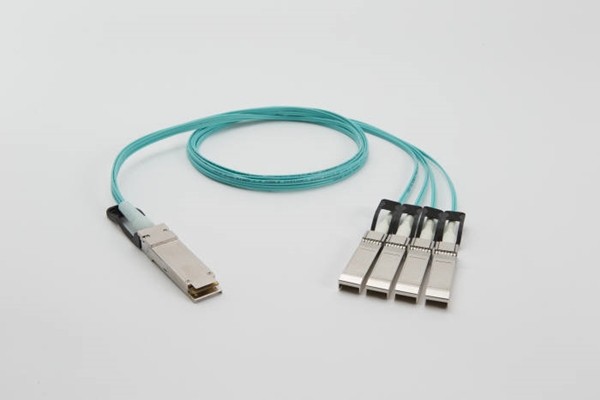Optomind made an announcement that it developed AOCs (Active Optical Cable) for 100Gbps optical engines for data centers and is preparing to mass-produce them. 100Gbps is a speed that can transmit 100 billion bits of data, which corresponds to about three ultra-high quality DVD movies, in one second. Optomind is planning to release them sometime during the first half of this year and is expecting that it will make more than $9.39 million (10 billion KRW) in sales this year just from AOCs.
AOC is an optical cable that has photoelectric conversion devices installed at each end unlike regular manual optical cables. It is difficult to process ultra-fast data with copper wire, which is usually used to transmit data currently, due to occurrence of resistance as signals are leaning towards outside from increased frequency bandwidth and skin effect where there is distortion in digital signals. Not only are AOCs excellent in transmitting data, but they also have strengths such as low signal distortion, heating, and electricity consumption and are seen as perfect cables to process fast data in the future as a result.
However fact that ‘coupling’ process, which combines optical signals as optical fibers, was a very complicated process was a technical barrier for industries. Because AOCs that are based on current optical telecommunication technologies that adjust and fix mechanical accuracy under micrometers require expensive facilities, it was difficult to popularize them due to high costs for processes and low productivity.
Optomind solved these problems through its patented technology called ‘Modular Optical Coupling’ method. Just like Legos, modular method implements coupling by making a shape of a substrate and making it into an algorithm. Because this method has high production efficiency and it can lower production cost as it does not require high-accurate equipment, Optomind is expecting that AOCs will begin to spread within markets.

Based on these technical skills, Optomind succeeded in attracting investments from Mitsubishi Gas Chemical at the end of last year and decided to co-sell its AOCs to global markets. It is expected that they will also create synergy from Mitsubishi Gas Chemical’s fibers, PCBs, lens modules.
Optomind is predicting that size of AOC markets will increase explosively as number of demands for transmitters for large data from medical devices and VR (Virtual Reality) including 8K TV, which has 16 times higher resolution than full HD TV, and Ethernet for data centers that are more than 100Gbps is continuing to increase. It is also looking at a possibility of markets for ‘On Bond Optics’ that connects parts within semiconductors or camera modules through optical wires.
Optomind is planning to develop 200Gbps AOCs and 400Gbps AOCs additionally sometime during the first half of this year. Also it is hoping to develop AOC that can respond to HDMI 2.1 for 8K TVs and new 1.4 DP (Display Port) standards by end of the first quarter of this year. Since last year, it has been supplying transparent AOCs for premium TVs to South Korean businesses.
“Number of demands for optical connections will increase explosively as current copper wires have limitations in processing and storing enormous amount of data as we face generations of 8K, AI (Artificial Intelligence), Big Data, and IoT (Internet of Things).” said President Kim Bong-cheol of Optomind. “AOCs 100Gbps optical engines for data centers will cause huge sensations in optical industries as they are five times cheaper than current AOCs due to innovative modular technologies.”
Staff Reporter Jung, Hyeonjung | iam@etnews.com